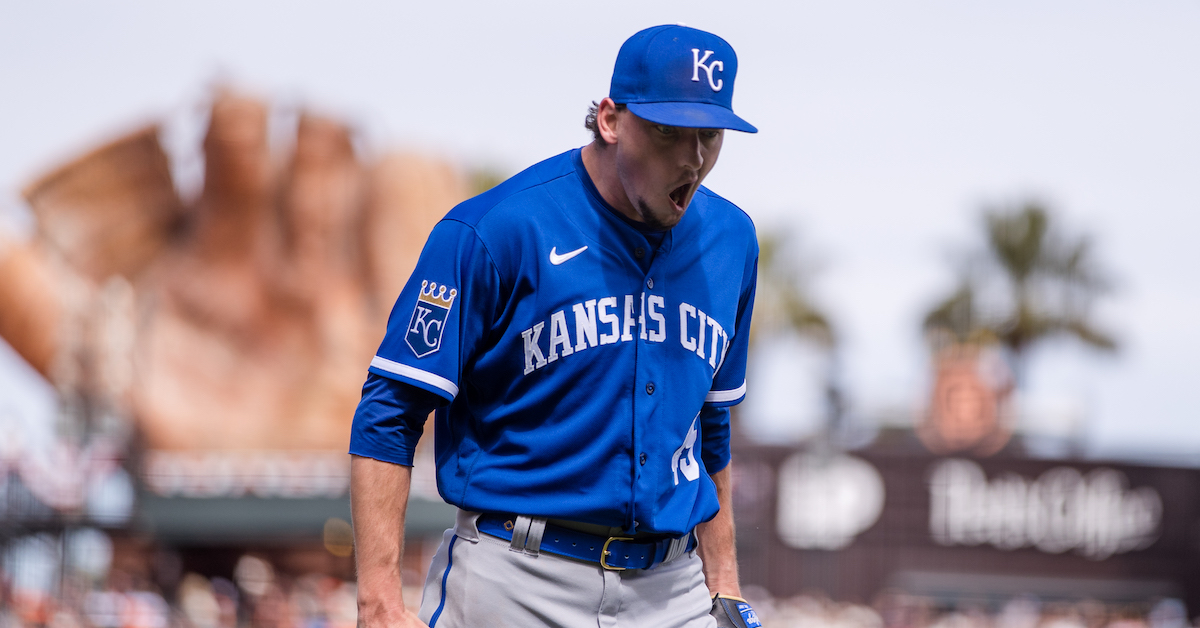Taylor Clarke Has Dipped and Swept His Way to Success

On Saturday, Taylor Clarke was in quite the pickle. The Royals had tasked him with pitching the eighth inning of a tied ballgame against the Giants and it wasn’t going very well. Clarke allowed three consecutive singles to J.D. Davis, Joc Pederson, and Mike Yastrzemski, with each hit 104 mph or harder. The bases were loaded with no outs. The Giants were reading Clarke’s pitches incredibly well and he needed a solution, fast. Clearly, he found one. Clarke struck out the next three hitters in order, earning seven called or swinging strikes. Kansas City’s offense took the lead in the ninth and went on to complete the comeback victory. So what was special about the way Clarke got out of his jam? Of the 13 pitches he threw, not a single one was a fastball.
While there are many relievers who barely throw any fastballs, like Alex Colomé and Matt Wisler, Clarke isn’t one of them. He came up as a starter with Arizona throwing heaters about half the time. After being converted to the bullpen and experiencing a two-tick velocity spike, he kept up that fastball usage. Had Clarke randomly chosen pitches in line with his career averages (48.8% fastballs) during this three-batter stretch, the odds of him choosing secondaries 13 times in a row would be just .017%, or 1-in-6,000. But on Saturday, he turned to his best stuff and ended up with the best possible results.
The first hitter up with the bases loaded was infielder Thairo Estrada. Estrada likes to put balls in play, and with three ducks on the pond, balls in play often mean runs. In 2022, he combined to strike out and walk just 22.6% of the time, considerably below the league average of 30.6%. Clarke started off the at-bat with one of his two slider variants. This variant, which sits 87-90 mph with a few inches of horizontal break, has a hybrid cutter/slider shape, though he often throws it glove side just like his other, sweepier slider in the low-to-mid-80s. Clarke missed his spot and the pitch drifted over the plate, but Estrada watched it for a called strike. Read the rest of this entry »










